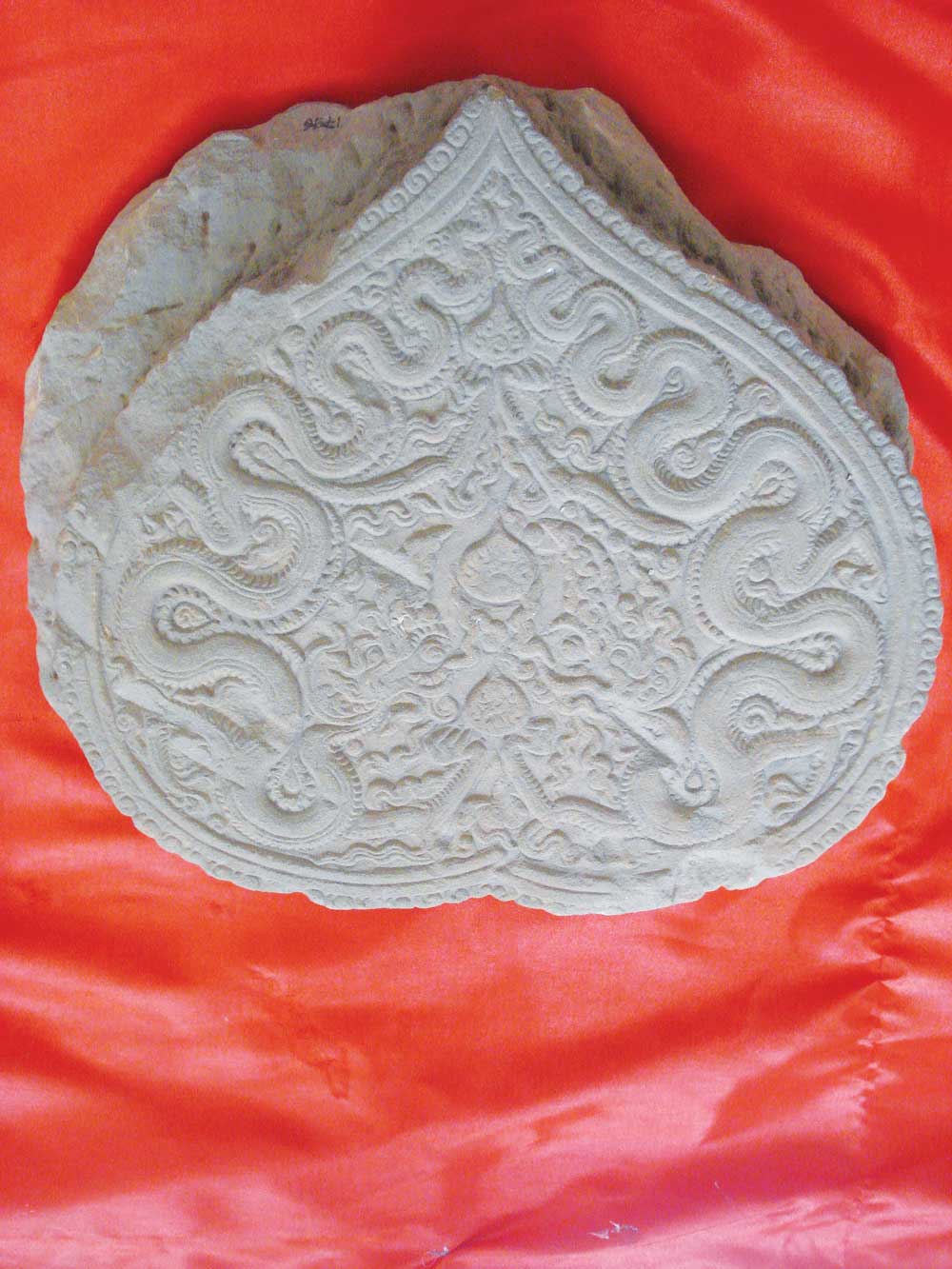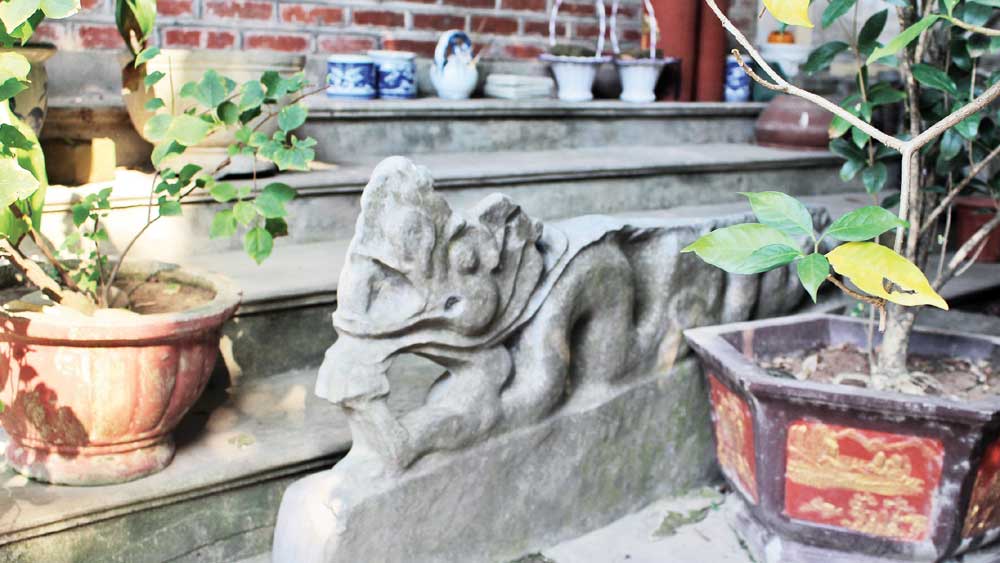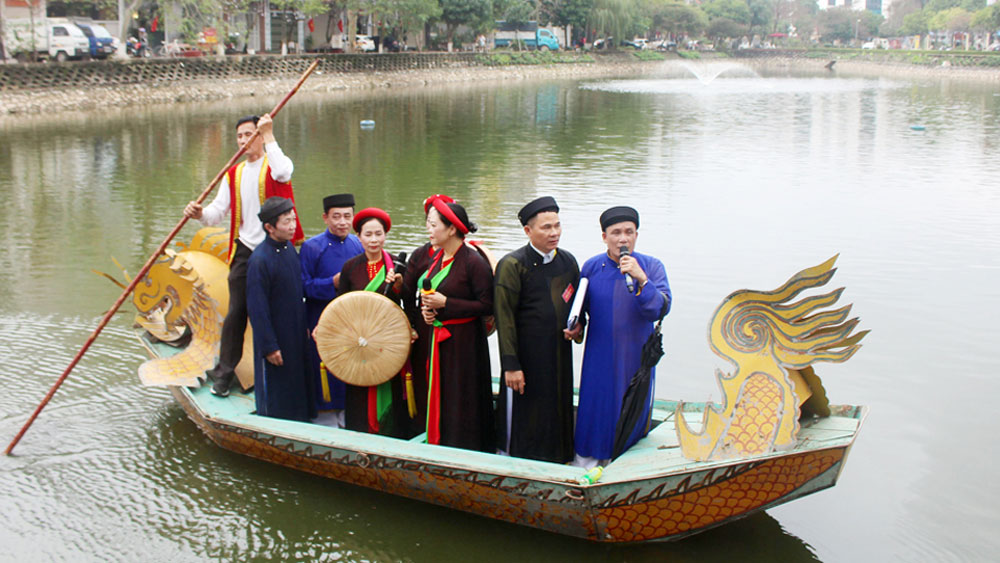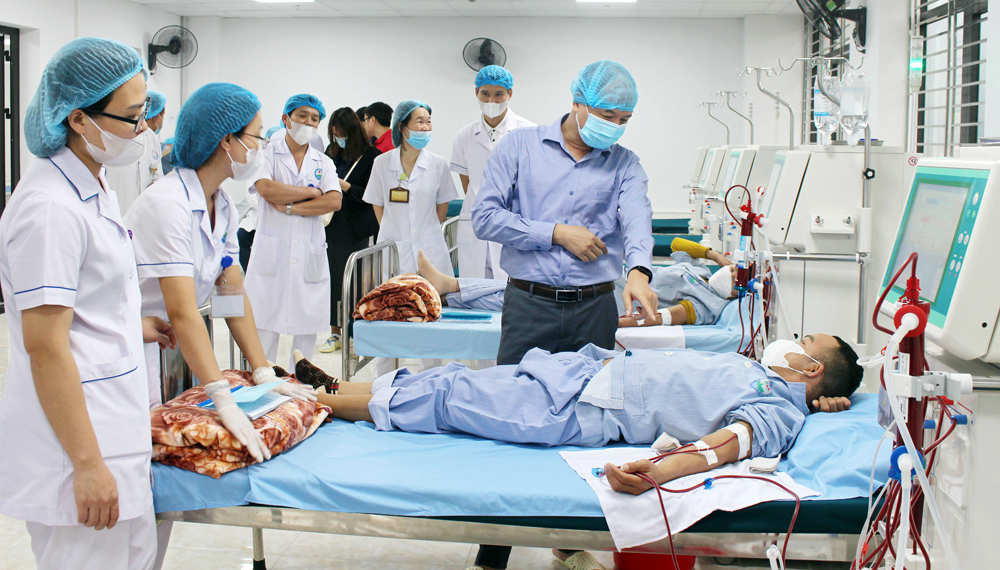Unique dragon image in ancient Vietnamese architecture
Ly Dynasty stone dragon on Bodhi leaf at Cao Pagoda in Kham Lang commune, Luc Nam district
The dragon image is carved on the relief "Two Dragons Battle for Pearls", made of fine sandstone. This material has not been found in the province. The work is in the shape of a Bodhi leaf with a quite small size.
 |
|
The image of dragon carved on a Bodhi leaf at Cao Pagoda in Kham Lang commune, Luc Nam district. |
This is an artifact bearing the symbol of sacred dragons, elaborately and meticulously crafted to make them similar to those discovered by scientists at the Thang Long Imperial Citadel, Phat Tich Pagoda and Dam Pagoda in Bac Ninh province and a number of other pagodas built during the Ly Dynasty in the northern delta and midland region.
|
Since ancient times, Vietnamese residents were familiar with wet rice cultivation, so in their beliefs, they always prayed for good weather. Therefore, they considered dragon a symbol of divine power, good omen and development. The image of dragon appeared on Dong Son bronze drums and mirrors thousands of years ago. In ancient Vietnamese architecture, especially from the Ly Dynasty (11th century) onwards, the image of sacred dragon was increasingly popular on architectural spaces and structures. |
The top of the Bodhi leaf is embossed with the image of two dragons in a flying posture, playing with three pearls symmetrically.
The three pearls are carved in the shape of three small sacred leaves and arranged in three extremely "prime" positions in a harmonious and reasonable manner.
The pair of sacred dragons on the Bodi leaf at Cao Pagoda is a unique artistic sculpture and a symbol of the desire to rise high and fly far towards the brilliant development of Dai Viet (Great Viet) ruled by the Ly Dynasty.
Stone dragon at My Dien Pagoda in Nenh town, Viet Yen district
The dragon image is shown on the stairs railing in front of the Three Jewels in the campus of My Dien Pagoda (literally called Thanh Minh Tu).
The work is made of green stone (limestone). Originally there was a pair of dragons arranged in parallel and oppositely, but only one half was discovered, perhaps the other half is still underground.
My Dien Pagoda's stone dragon bears a sculptural style of the early 13th century (late Ly Dynasty, early Tran Dynasty). The dragon has an elongated body with a high head, tapering towards the tail.
 |
|
The stone dragon at My Dien Pagoda in Nenh town, Viet Yen district. |
The dragon's head has a crest, hair, tassels, eyelashes and a mane, while its scaleless body meanders, similar to the style of dragon carving during the Ly Dynasty.
However, the stone dragon of My Dien Pagoda has a crest, tassels, short eyelashes, a full round body, short legs, no tassels at the elbow, and hidden claws - a clear expression of the dragon image created in the early Tran Dynasty.
Stone dragon at Kham Lang Pagoda in Luc Nam district
Eight dragon-shared decors were sculpted on the stone altar of Kham Lang Pagoda in Kham Lang commune, Luc Nam district. The altar was made with donation from a native named Luu Cau and his wife, Do Xu, in the fifth year of Thuan Thien (1432).
 |
|
The stone altar at Kham Lang Pagoda in Luc Nam district. |
Through the image of the sacred dragon, ancient artisans conveyed the thoughts and sentiments of Dai Viet people when the country had just been cleared of foreign invaders, showing their optimism, relaxation and peaceful mind.
Although the masterpiece of stone altar at Kham Lang Pagoda is nearly 600 years old, it remains almost intact. It is the most typical and unique artifact at historical and cultural relics in Bac Giang province.
 Bắc giang
Bắc giang

















Reader's comments (0)